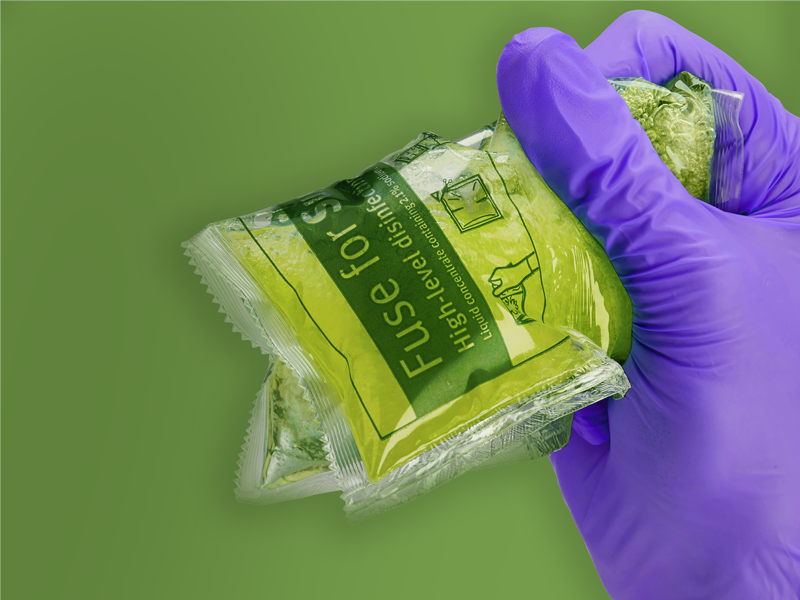Description
Tristel Fuse for Surfaces is a sporicidal disinfectant solution designed specifically for use on large surface areas such as floors and walls.
Tristel Fuse for Surfaces combines the powerful biocidal efficacy of chlorine dioxide with excellent cleaning action.
Tristel Fuse for Surfaces incorporates two separate compartments that contain 50ml Base solution (citric acid) and 50ml Activator solution (sodium chlorite). When mixed upon bursting the sachet, a proprietary chlorine dioxide chemistry is generated for dilution into five litres of water.
Tristel Fuse for Surfaces is classified as a biocide under the EU Biocides Regulation. See Tristel Fuse for Surfaces in action here.
Efficacy
Tristel Fuse for Surfaces is a sporicidal disinfectant solution designed specifically for use on large surface areas such as floors and walls. It has been tested and proven effective against a wide range of microorganisms in a five-minute contact time, including:
Bacillus cereus
Bacillus subtilis
Clostridium difficile
Mycobacteria Avium & Terrae (TB)
Adenovirus
Poliovirus
Norovirus
Aspergillus brasiliensis (formerly niger)
Enterococcus hirae
Pseudomonas aeruginosa
Staphylococcus aureus
Applications
Tristel Fuse for Surfaces is designed for the sporicidal disinfection of large surface areas such as floors and walls.
Product Options
Tristel Fuse for Surfaces is available in boxes of 40 unique dual-compartment sachets.
Chemistry
Tristel Fuse for Surfaces utilises Tristel’s proprietary chlorine dioxide chemistry, a well-documented and highly effective biocide.
A sachet Tristel Fuse for Surfaces has two separate compartments that contain 50ml of Tristel Base Solution (citric acid) and 50ml of Tristel Activator Solution (sodium chlorite). When mixed upon bursting the sachet, Tristel’s proprietary chlorine dioxide chemistry is generated for dilution into five litres of water.
Chlorine dioxide does not form hazardous by-products or halogenated compounds.
Due to the way chlorine dioxide breaks down and destroys microorganisms, resistance cannot develop over time. Find out more about the mode of action of chlorine dioxide here.
